A MAGNIFICENT AND RARE LARGE PAIR OF PORTRAITS OF A NOBLEMAN AND A NOBLE LADY19th century
Ink and colours on silk, framed and glazed.
Both figures seated on lacquered thrones and dressed in winter ceremonial attire, the male dignitary wearing a blue-ground pleated robe bordered with brown fur, embroidered with confronted four-clawed dragons, a furry surcoat beneath a Mandarin necklace made of red and blue pearls, and a court hat with a gold finial inset with pearls and a ruby stone; his Imperial consort wearing three double-gourd drop earrings on each lobe, a chestnut-ground dragon robe, a blue-ground silk sleeveless vest decorated with four four-clawed dragons, three necklaces, a torque around her neck, a brown fur brim-hat above a silk headband and a red floss silk crown embellished with gold and pearl, kingfisher phoenix, and a gold finial inset with pearls and a ruby stone. Each 213cm (83 7/8in) long x 133.5cm (52in 9/16in) wide. (2).Footnotes十九世紀 夫婦容像一對
設色絹本 鏡框
Provenance: Dominique Capece Zurlo (1905-1982), France, and thence by descent
來源:Dominique Capece Zurlo (1905-1982),法國,並由後人保存迄今
Impressive in size and imbued with realism and ritual reverence, these portraits are rare visual documents relating to a pair of high-ranking noble figures of Qing society. The elaborate rendering of the garments, combined with the stark formality of the iconic pose of the figures, indicates that the paintings likely served as a central focus of ritual activities aimed at paying homage to the ancestors.
The high level of social prestige conveyed by the winter garments and accessories worn by the present figures suggests that they may have been nobles of great stature, most probably a princely couple. According to the 'Illustrated Regulations for the Ritual Paraphernalia of the Imperial Court' Huangchao liqi tushi 皇朝禮器圖式, codified in 1759, only princes of the third and fourth degree and other nobles could wear a blue-ground ceremonial robe chaofu decorated with side-facing four-clawed dragons at the skirt; see L.Wrigglesworth, Imperial Wardrobe, Berkeley, 2002, pp.14-30; see also J.Vollmer, C.Hall and Lee Cheor Lin, Power Dressing. Textiles for Rulers and Priests from the Chris Hall Collection, Singapore, 2006, p.147.
The 'Regulations' contained strict codes of official dress and accessories categorised according to the social status held by the wearer. 'Dragon robes' could only be worn by the highest-ranking members of society. They were thus treated as supreme social markers projecting a powerful image of Imperial might through the symbolism of the dragon, emblematic of the Emperor, at the centre of a cosmic diagram encompassing the heavens, represented by the vaporous clouds, and the oceans, represented by the rolling waves.
The elites of the Qing dynasty wore blue-ground 'dragon' robes during the performance of State rituals at the altar of Heaven, Tiantan, in Beijing. The conspicuous amount of fur trimming used for the ceremonial robe chaofu and the surcoat worn by the male figure in the present portrait must have kept him warm on the day of the sacrifice, which took place during winter, in the early hours of the morning, after the longest night of the year. According to a historical record, it was so cold on this occasion that '(..) even the thickest furs failed to keep strong men from chilling to the marrow, and in some cases, going to the graves [...].' See W.E.Soothill, The Hall of Light, Cambridge, 2002, pp.194-219.
The beaded necklace chaozu was another important constituent of the Qing formal attire. Only princes and princesses of the third and fourth degree could wear this ornament made of coral beads tied with blue and black string, such as displayed on the present paintings. In addition, only princes of the fourth rank could wear a gold insignia chaoguan inlaid with six pearls as finial to the hat, as seen on the present figures, as well as the one-eyed peacock feather danyan hualing, a distinction awarded by the Emperor for a special service; see L.Wrigglesworth, Imperial Wardrobe, Berkeley, 2002, pp.112 and 183.
By the same token, the clothes and accessories worn by the female figure are consistent with those worn by a princess; although she wears a ceremonial 'dragon' robe of chestnut-ground colour chaopao, which was prescribed for Imperial princes and other nobles, on the top, she has a blue-ground sleeveless ceremonial garment chaogua decorated with four profile four-clawed dragons, which would have been reserved for the wives of a prince. In addition to a coral necklace, she has two additional honey-amber-coloured cross-necklaces: this combination could only have been worn by princesses from the first to the fourth rank; see L.Wrigglesworth, Imperial Wardrobe, Berkeley, 2002, p.183. Lastly, the black silk headband, the torque lingyua around the neck and the three pearl earrings worn in each ear lobe, a Manchu practice, suggest that the figure was likely a daughter of a distinguished banner family who was traditionally appointed by the Qing Court as consorts for members of the Court; see V.Garrett, Chinese Dress from the Qing to the Present, Clarendon, 1997, p.40.
The female portrait is very closely related to a portrait of a noble lady identified as the daughter of a prince, Qing dynasty, from the collection of the Smythsonian Institution, Washington, acc.no.S1991.97, illustrated by J.Stuart and E.Rawski, Worshipping the Ancestors. Chinese Commemorative Portraits, Washington, 2001, p.195, fig.21: both female figures wear nearly-identical outfits and are seated on similar lacquer chairs covered with a green silk drape.
The clothing of the male figure closely compares with the robes worn by an unidentified courtier, 18th-19th century, and with a portrait of Oboi, (d.1669), mid-18th-early 20th century, both in the collection of the Sackler Gallery, Washington DC, acc.nos.S1991.126 and S1991.93, illustrated Ibid., p.132 fig.5.8 and p.98, fig.4.3. Compare the coral necklace with a related coral chaozu, Qing dynasty, in the collection of the Palace Museum, Beijing, illustrated by M.Wilson, Imperial Chinese Robes from the Forbidden City, London, 2010, p.31, fig.8.
A related pair of portraits of a nobleman and a royal lady, 19th century, was sold at Bonhams London, 10 November 2016, lot 117.
A MAGNIFICENT AND RARE LARGE PAIR OF PORTRAITS OF A NOBLEMAN AND A NOBLE LADY19th century
Ink and colours on silk, framed and glazed.
Both figures seated on lacquered thrones and dressed in winter ceremonial attire, the male dignitary wearing a blue-ground pleated robe bordered with brown fur, embroidered with confronted four-clawed dragons, a furry surcoat beneath a Mandarin necklace made of red and blue pearls, and a court hat with a gold finial inset with pearls and a ruby stone; his Imperial consort wearing three double-gourd drop earrings on each lobe, a chestnut-ground dragon robe, a blue-ground silk sleeveless vest decorated with four four-clawed dragons, three necklaces, a torque around her neck, a brown fur brim-hat above a silk headband and a red floss silk crown embellished with gold and pearl, kingfisher phoenix, and a gold finial inset with pearls and a ruby stone. Each 213cm (83 7/8in) long x 133.5cm (52in 9/16in) wide. (2).Footnotes十九世紀 夫婦容像一對
設色絹本 鏡框
Provenance: Dominique Capece Zurlo (1905-1982), France, and thence by descent
來源:Dominique Capece Zurlo (1905-1982),法國,並由後人保存迄今
Impressive in size and imbued with realism and ritual reverence, these portraits are rare visual documents relating to a pair of high-ranking noble figures of Qing society. The elaborate rendering of the garments, combined with the stark formality of the iconic pose of the figures, indicates that the paintings likely served as a central focus of ritual activities aimed at paying homage to the ancestors.
The high level of social prestige conveyed by the winter garments and accessories worn by the present figures suggests that they may have been nobles of great stature, most probably a princely couple. According to the 'Illustrated Regulations for the Ritual Paraphernalia of the Imperial Court' Huangchao liqi tushi 皇朝禮器圖式, codified in 1759, only princes of the third and fourth degree and other nobles could wear a blue-ground ceremonial robe chaofu decorated with side-facing four-clawed dragons at the skirt; see L.Wrigglesworth, Imperial Wardrobe, Berkeley, 2002, pp.14-30; see also J.Vollmer, C.Hall and Lee Cheor Lin, Power Dressing. Textiles for Rulers and Priests from the Chris Hall Collection, Singapore, 2006, p.147.
The 'Regulations' contained strict codes of official dress and accessories categorised according to the social status held by the wearer. 'Dragon robes' could only be worn by the highest-ranking members of society. They were thus treated as supreme social markers projecting a powerful image of Imperial might through the symbolism of the dragon, emblematic of the Emperor, at the centre of a cosmic diagram encompassing the heavens, represented by the vaporous clouds, and the oceans, represented by the rolling waves.
The elites of the Qing dynasty wore blue-ground 'dragon' robes during the performance of State rituals at the altar of Heaven, Tiantan, in Beijing. The conspicuous amount of fur trimming used for the ceremonial robe chaofu and the surcoat worn by the male figure in the present portrait must have kept him warm on the day of the sacrifice, which took place during winter, in the early hours of the morning, after the longest night of the year. According to a historical record, it was so cold on this occasion that '(..) even the thickest furs failed to keep strong men from chilling to the marrow, and in some cases, going to the graves [...].' See W.E.Soothill, The Hall of Light, Cambridge, 2002, pp.194-219.
The beaded necklace chaozu was another important constituent of the Qing formal attire. Only princes and princesses of the third and fourth degree could wear this ornament made of coral beads tied with blue and black string, such as displayed on the present paintings. In addition, only princes of the fourth rank could wear a gold insignia chaoguan inlaid with six pearls as finial to the hat, as seen on the present figures, as well as the one-eyed peacock feather danyan hualing, a distinction awarded by the Emperor for a special service; see L.Wrigglesworth, Imperial Wardrobe, Berkeley, 2002, pp.112 and 183.
By the same token, the clothes and accessories worn by the female figure are consistent with those worn by a princess; although she wears a ceremonial 'dragon' robe of chestnut-ground colour chaopao, which was prescribed for Imperial princes and other nobles, on the top, she has a blue-ground sleeveless ceremonial garment chaogua decorated with four profile four-clawed dragons, which would have been reserved for the wives of a prince. In addition to a coral necklace, she has two additional honey-amber-coloured cross-necklaces: this combination could only have been worn by princesses from the first to the fourth rank; see L.Wrigglesworth, Imperial Wardrobe, Berkeley, 2002, p.183. Lastly, the black silk headband, the torque lingyua around the neck and the three pearl earrings worn in each ear lobe, a Manchu practice, suggest that the figure was likely a daughter of a distinguished banner family who was traditionally appointed by the Qing Court as consorts for members of the Court; see V.Garrett, Chinese Dress from the Qing to the Present, Clarendon, 1997, p.40.
The female portrait is very closely related to a portrait of a noble lady identified as the daughter of a prince, Qing dynasty, from the collection of the Smythsonian Institution, Washington, acc.no.S1991.97, illustrated by J.Stuart and E.Rawski, Worshipping the Ancestors. Chinese Commemorative Portraits, Washington, 2001, p.195, fig.21: both female figures wear nearly-identical outfits and are seated on similar lacquer chairs covered with a green silk drape.
The clothing of the male figure closely compares with the robes worn by an unidentified courtier, 18th-19th century, and with a portrait of Oboi, (d.1669), mid-18th-early 20th century, both in the collection of the Sackler Gallery, Washington DC, acc.nos.S1991.126 and S1991.93, illustrated Ibid., p.132 fig.5.8 and p.98, fig.4.3. Compare the coral necklace with a related coral chaozu, Qing dynasty, in the collection of the Palace Museum, Beijing, illustrated by M.Wilson, Imperial Chinese Robes from the Forbidden City, London, 2010, p.31, fig.8.
A related pair of portraits of a nobleman and a royal lady, 19th century, was sold at Bonhams London, 10 November 2016, lot 117.
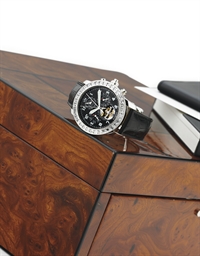
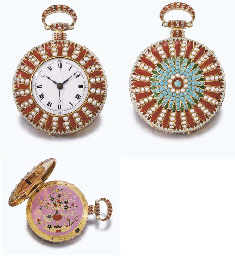
.jpg)
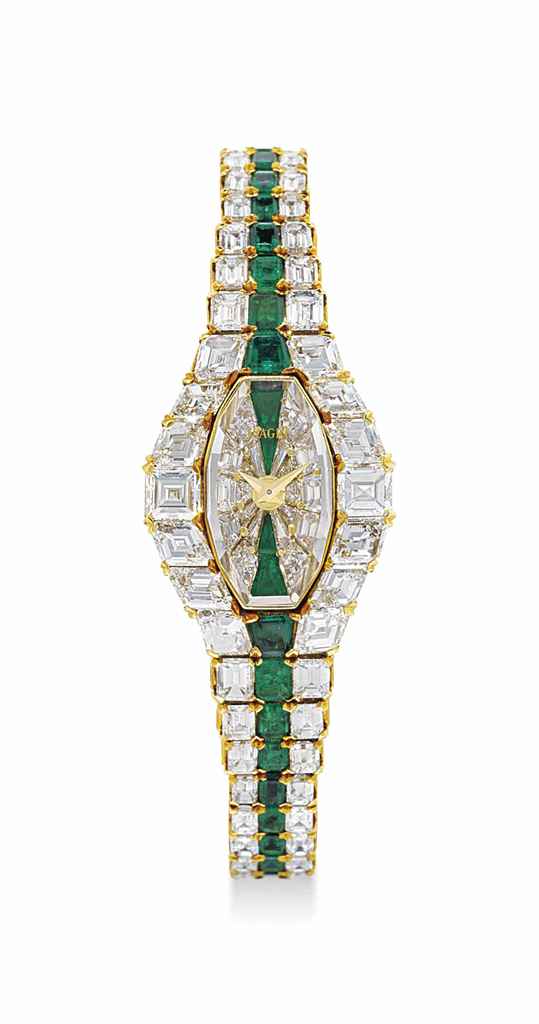

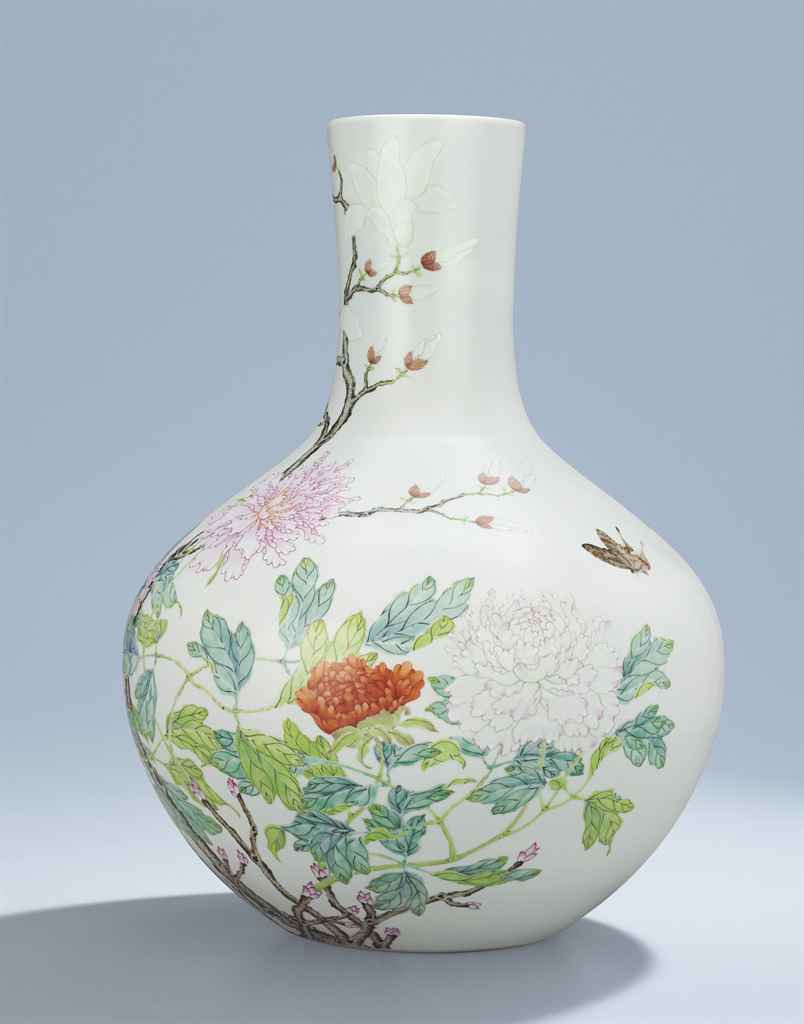
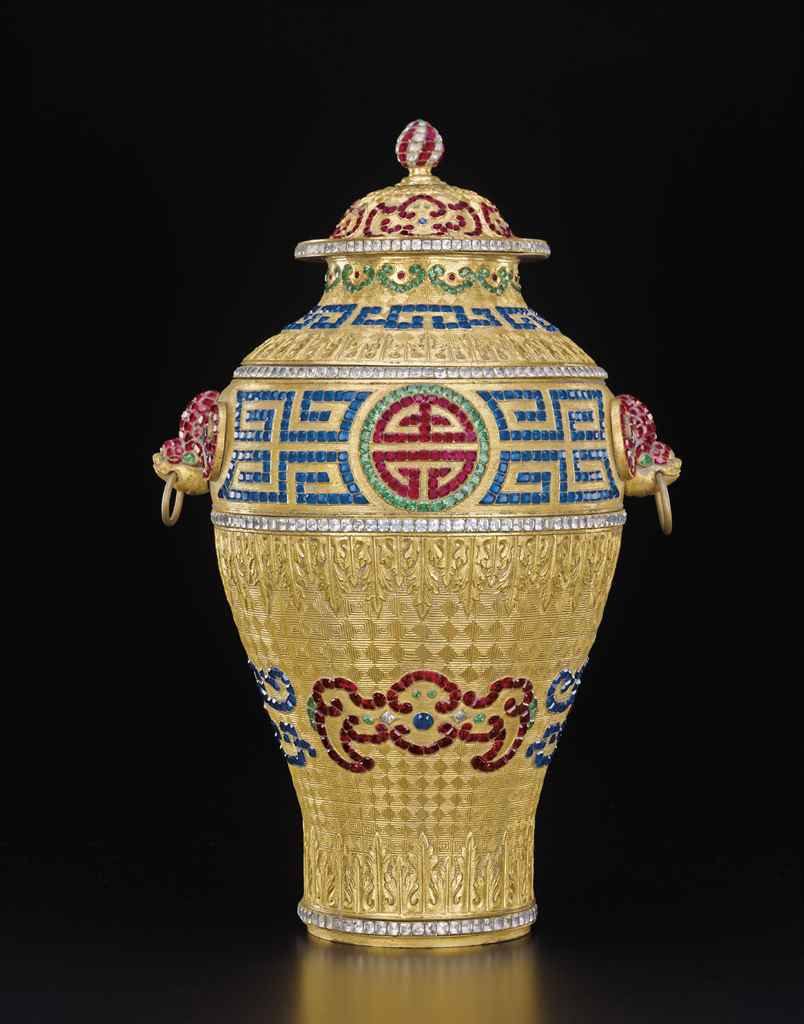
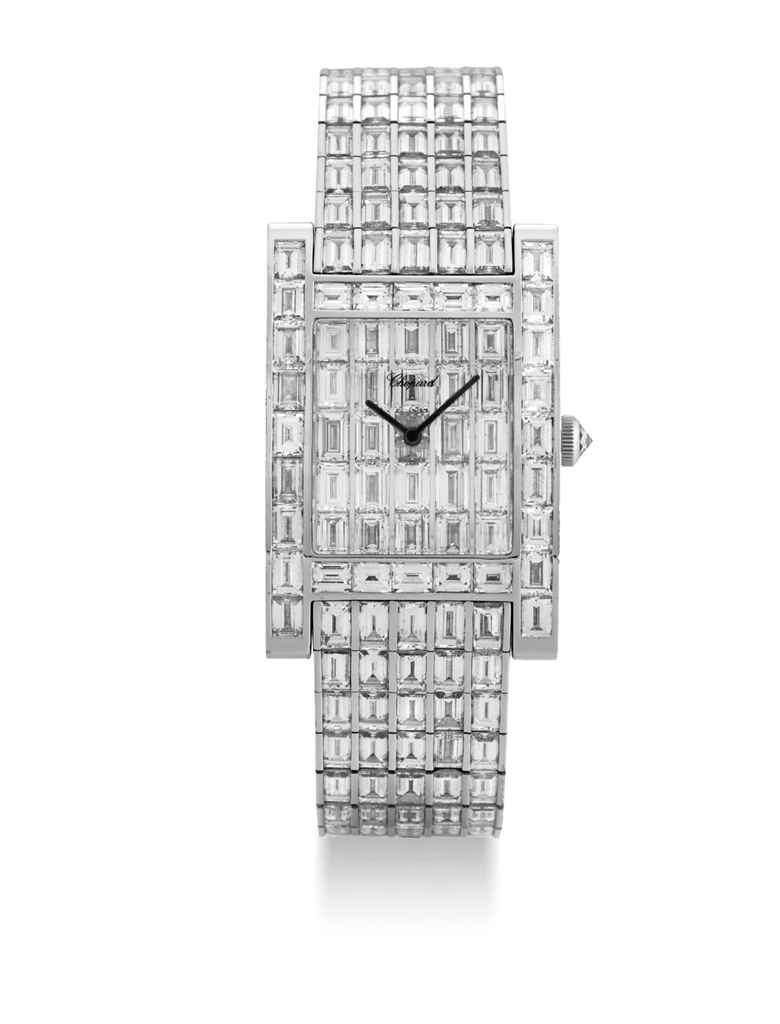
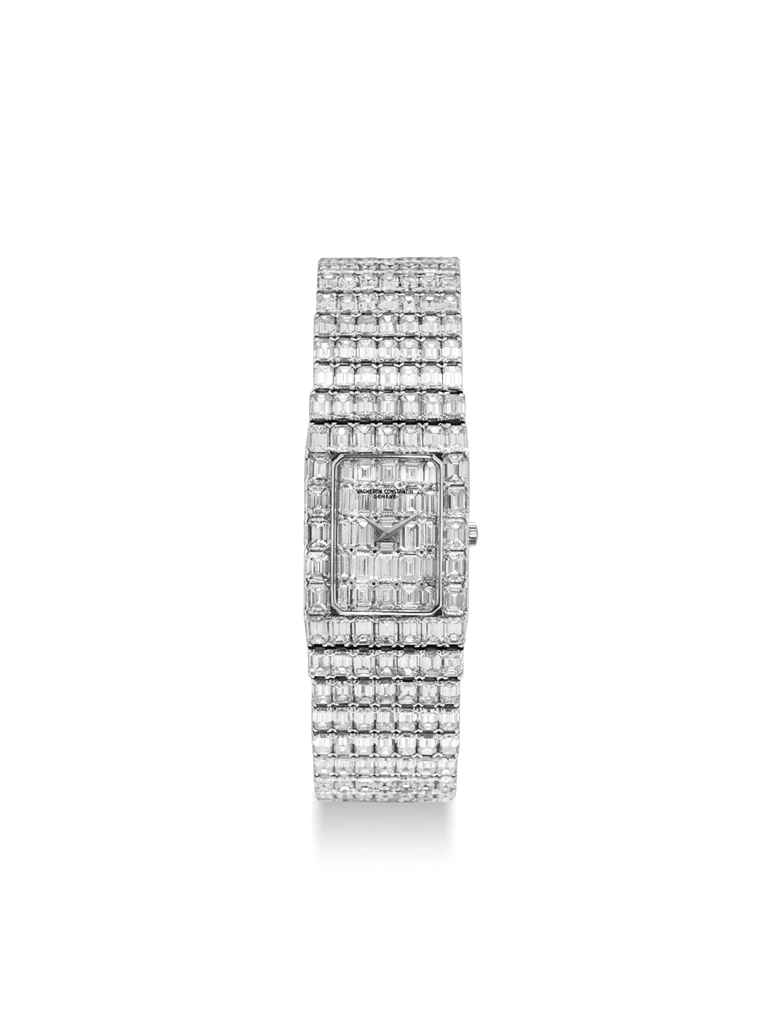
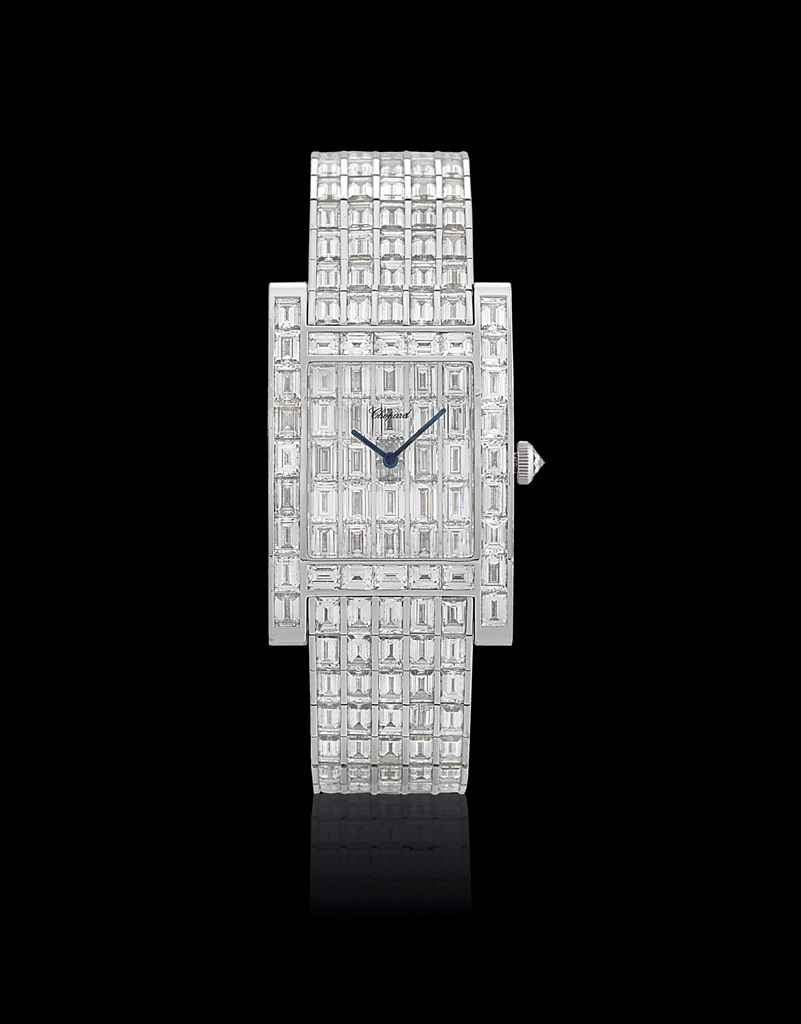
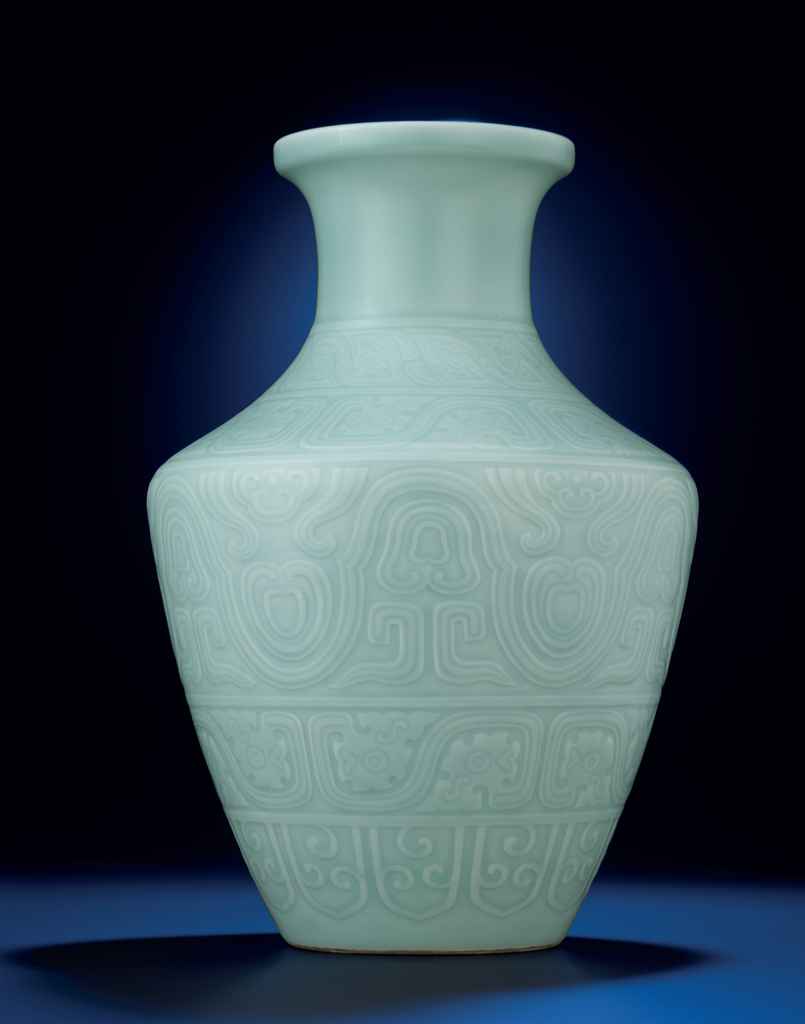
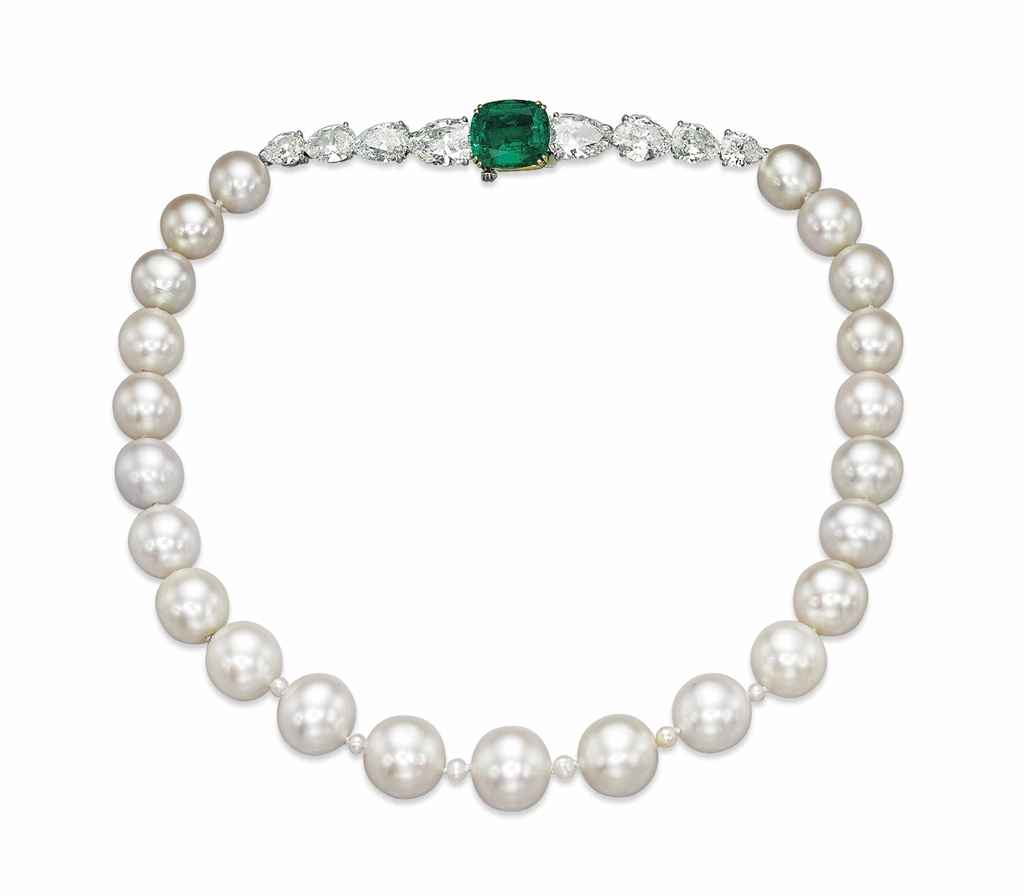


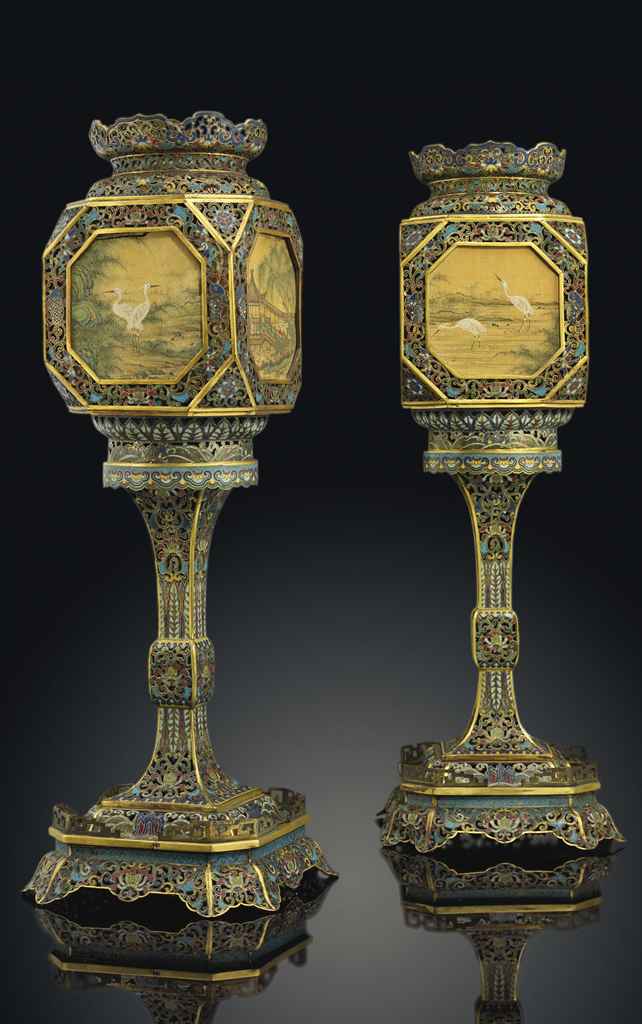
Try LotSearch and its premium features for 7 days - without any costs!
Be notified automatically about new items in upcoming auctions.
Create an alert